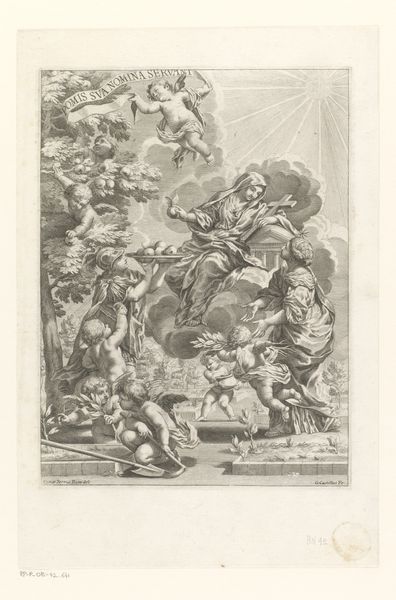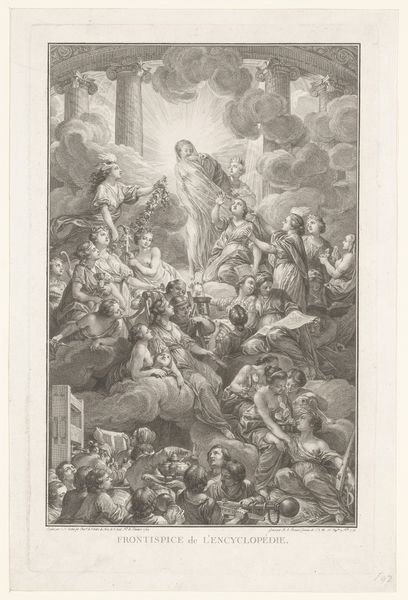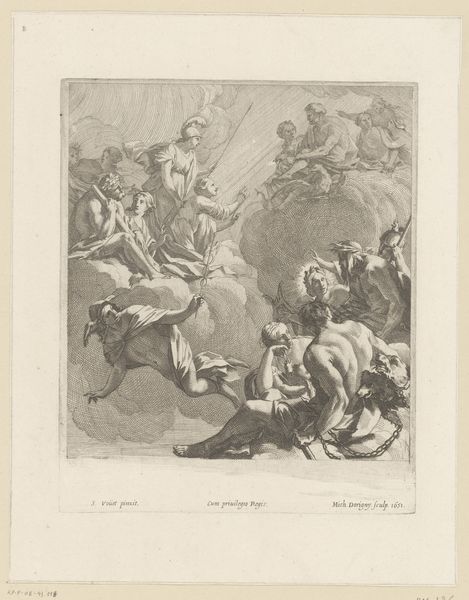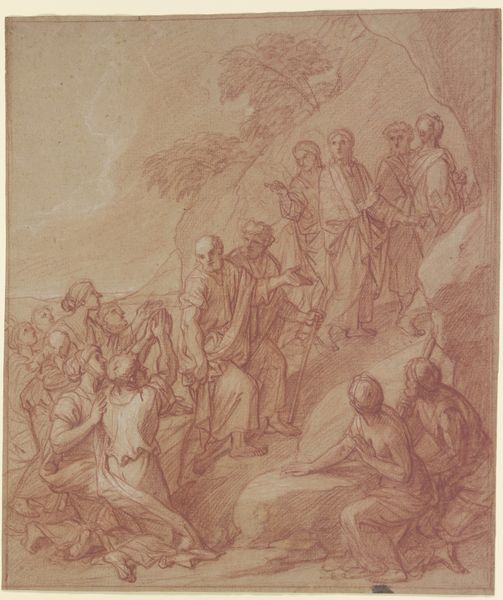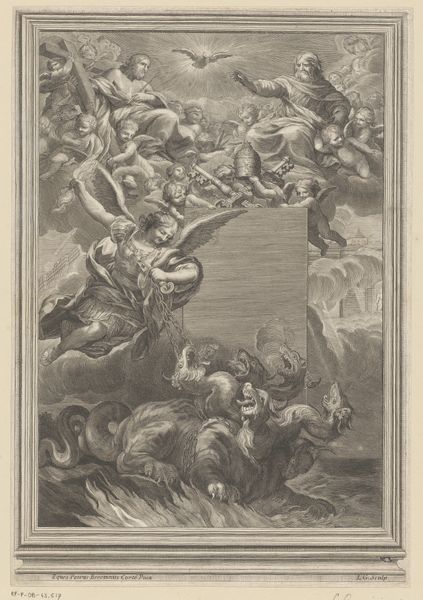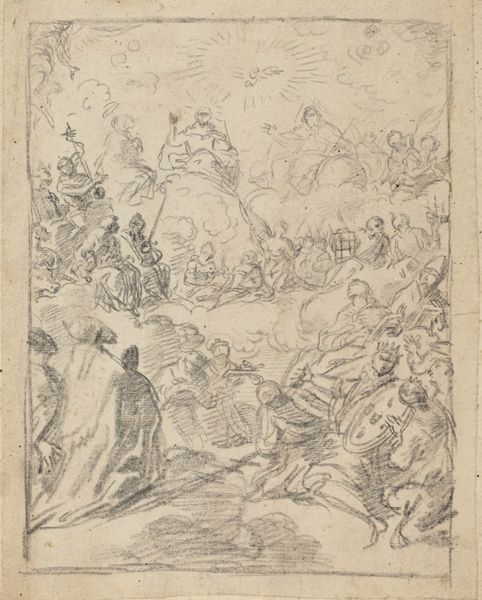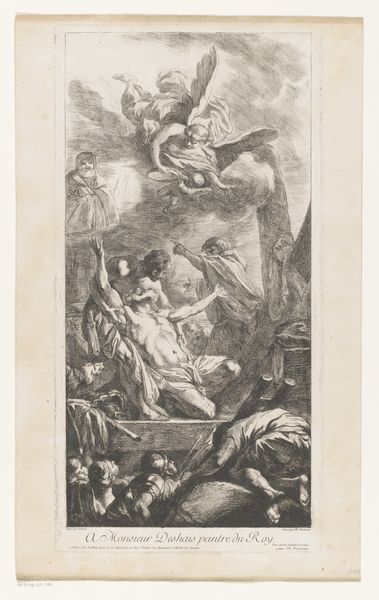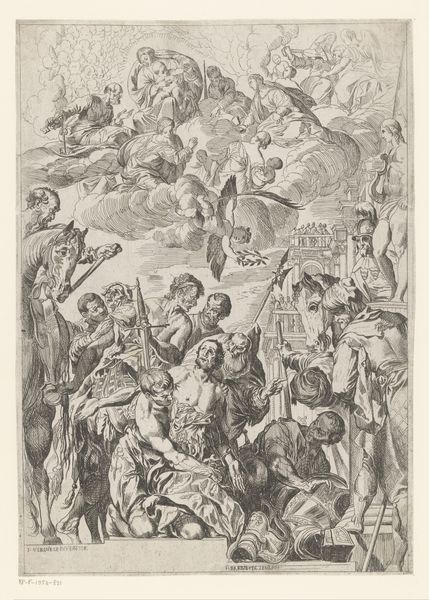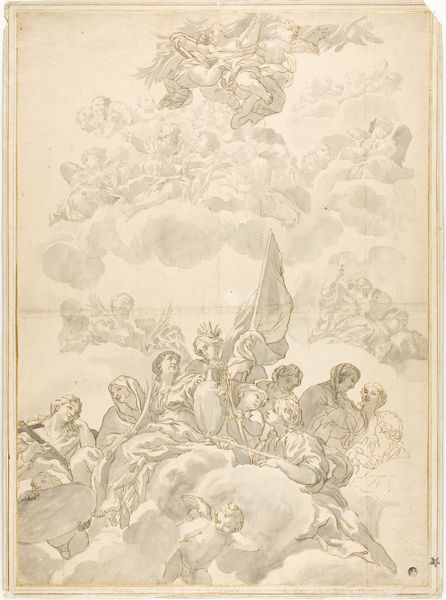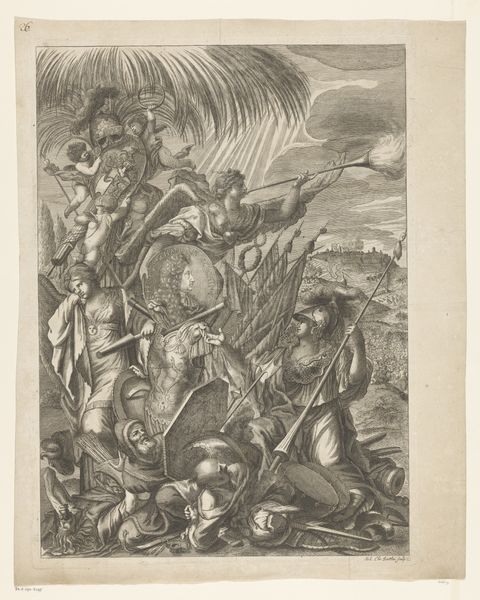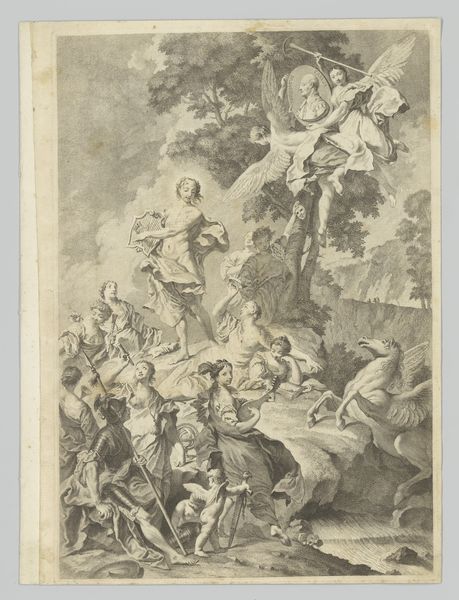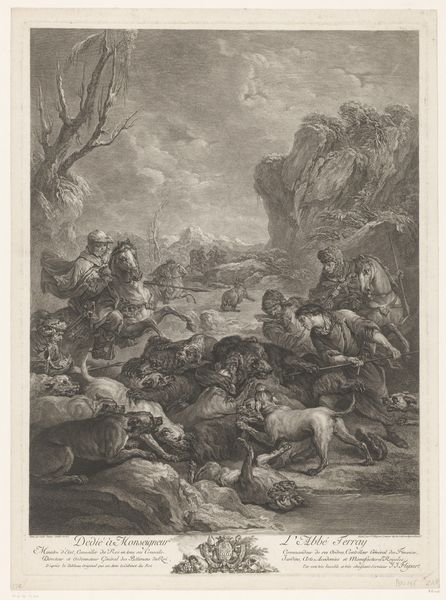
Dimensions: height 200 mm, width 144 mm
Copyright: Rijks Museum: Open Domain
Editor: Here we have Thomas Christian Winck’s etching, "Apollo met de muzen op de Parnassus," created sometime between 1748 and 1797. It's a very detailed print; you can really see the textures achieved through the etching process. What strikes me is the number of figures depicted – it must have been incredibly time-consuming to produce! What do you see in this piece, thinking about it as a material object and historical artifact? Curator: Considering it from a materialist lens, it's important to look at etching as a process – a reproductive technology that allowed for wider dissemination of images. Winck, by choosing etching, engages in a form of artistic labor that differs significantly from painting or sculpture. We must ask, who was his audience, and how did the means of production impact their engagement with classical allegories like this one? The accessibility of prints changed the landscape of art consumption, democratizing art to some degree, would you agree? Editor: I agree that etching is intrinsically linked to access and distribution. It’s fascinating how a single plate could produce multiple copies, extending the artwork’s reach beyond the traditional art world. What do you think about the socioeconomic implications of prints as multiples? Curator: Precisely. Prints allowed a broader, potentially less wealthy, audience to engage with art and culture. And considering the subject matter—Apollo and the muses—are we seeing a conscious effort to popularize classical learning and the arts, shifting it from elite patronage to a more general consumption? What does it say about the role of art and artists within that period of cultural production and value? Editor: So the material choice impacts the distribution which then changes how and by whom it's consumed and valued. I never considered the labor and democratizing forces involved in etching; I am going to think about art consumption more critically going forward. Curator: Exactly! By focusing on materials, we gain insights into social structures, consumption patterns, and the broader cultural context that shaped this artwork and its reception.
Comments
No comments
Be the first to comment and join the conversation on the ultimate creative platform.
